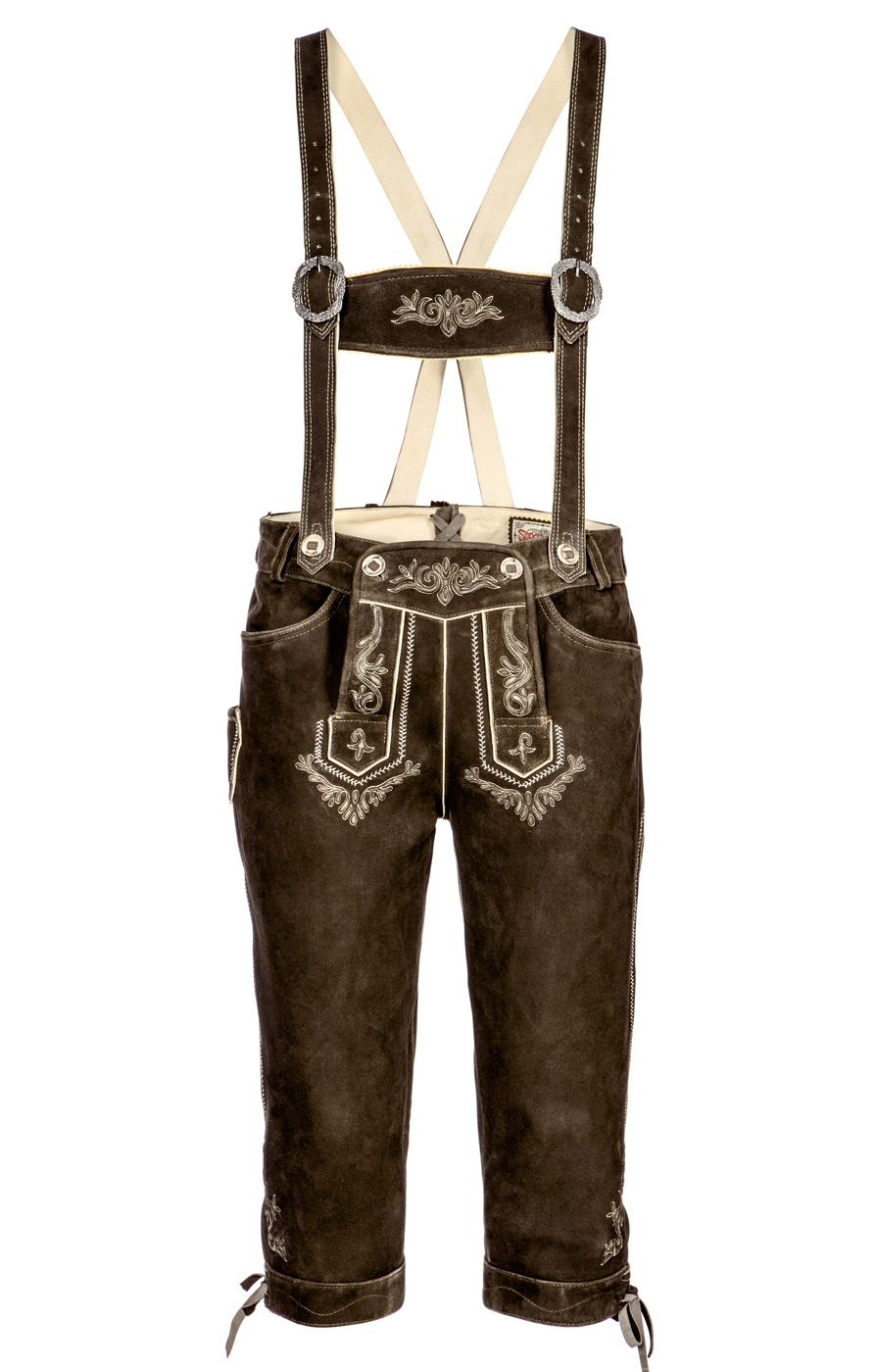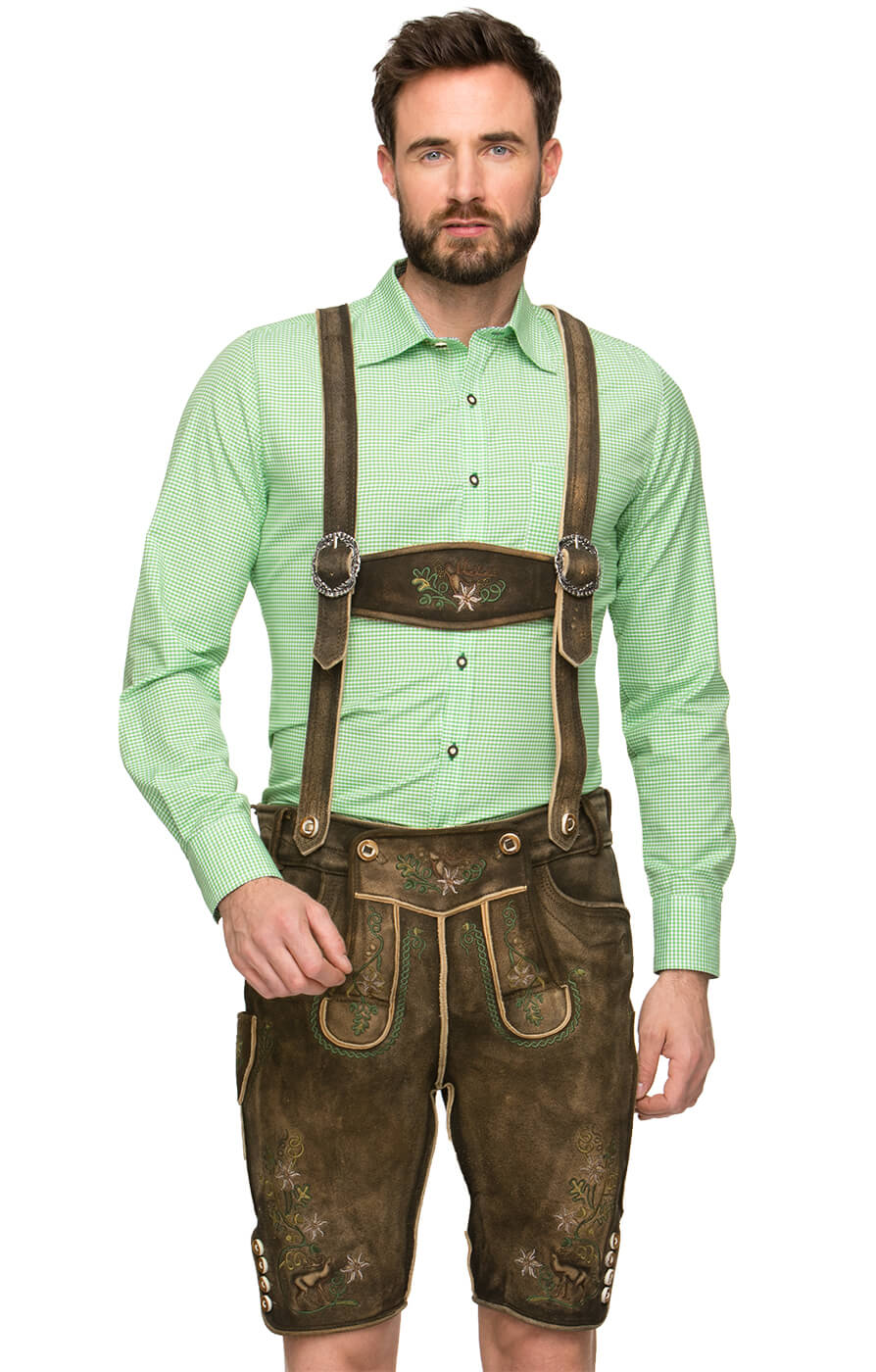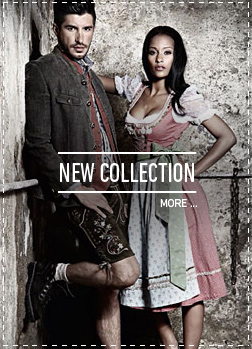Posted by trachten in Dirndl and Lederhosen, slider | Comments Off on Buying Lederhosen: A Beginner’s Guide Q&A
Buying Lederhosen: A Beginner’s Guide Q&A
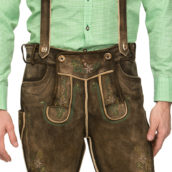
Are you going to be buying lederhosen for this year’s Oktoberfest? If it’s your first time purchasing the iconic Bavarian leather breeches, then you’ll doubtless have a few questions in your mind. After all, a quick search on the internet shows that you can spend everything from $20 to four-figure sums on lederhosen, and if you’re not in the know, it can be difficult to know what a fair price is and which markers of quality to look out for.
So before you buy, read our handy Q&A on buying lederhosen – and stop by at our sponsors if our advice sounds convincing and you want guaranteed authentic Bavarian lederhosen at a fair price.
1. What can lederhosen be made out of?
Authentic Bavarian lederhosen are only ever made from actual leather – after all, the name lederhosen means nothing other than “leather trousers”. Lots of the extremely cheap “lederhosen” you’ll find online are made of imitation leather or, even worse, felt or other fabrics. Avoid them like the plague as they look ridiculous and are also uncomfortable.
The most expensive lederhosen are made of deerskin: this is the softest and the most aesthetically pleasing leather, and it ages well. As a first-time buyer, however, goat-suede offers an authentic but good-value entry-level option. Goatskin is genuine leather, so it has the same weight and thickness, but lacks the fine graining of buckskin; for your first pair, though, they’re just perfect.
2. Which design elements are essential?
A few simple things have to be on any pair of authentic lederhosen, so if you can’t find even a single one of these on the pair you are looking at, steer clear:
- a button-flap over the fly (the “bib”) with embroidery detail
- a single seam running down the back with one rear pocket (right side)
- lacing at the top of the rear to tighten/loosen
- button down/lace-up finishes to the outer thigh surrounded by decorative stitching
- an elaborately-stitched knife-pocket on the right thigh
- front and rear waist buttons for detachable braces
- matching leather braces (either “Y” or “H” shape)
Nowadays, many lederhosen are sold with belts as the braces are currently not on-trend, but an authentic pair will always offer buttoning for braces (and usually offer them as an option). Themost common lengths, by the way, range from just over the knees to mid-thigh.
3. Which colour should I buy?
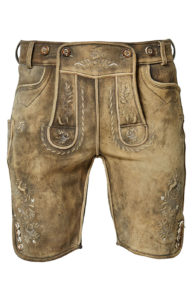
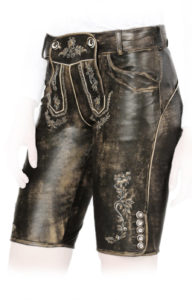 This is to some extent a matter of taste, but we would advise opting for medium browns for your first pair as these combine well with all cotton and wool colours (think about your shirt and socks). Black leather can look very smart, however, and there has a been a noticeable growth in lighter ash and camel colours, too. Bright colours are a sure sign of tourist-trap lederhosen, though, so avoid these; an exception is, of course, stitching, which is often green, red, or blue. Once again, though, we’d advise sticking to natural colours for your first pair.
This is to some extent a matter of taste, but we would advise opting for medium browns for your first pair as these combine well with all cotton and wool colours (think about your shirt and socks). Black leather can look very smart, however, and there has a been a noticeable growth in lighter ash and camel colours, too. Bright colours are a sure sign of tourist-trap lederhosen, though, so avoid these; an exception is, of course, stitching, which is often green, red, or blue. Once again, though, we’d advise sticking to natural colours for your first pair.
4. How does sizing work?
Since most lederhosen are made in Germany, German sizes are the most common system. Starting at 44, standard sizes go up in twos through to 60, where 44 is the equivalent of a 31” waist pair of jeans and 60 equals 44”. So a 46 is a 32”, a 48 a 33”, a 50 a 34” and so on.
When buying lederhosen, always choose the closest size possible to your measurements: do not “leave wiggle room” because the leather and the stitching stretch the first few times you wear the lederhosen, meaning that they expand slightly – especially when you sit in them. You can use the lacing at the rear to tighten the waist again (or indeed loosen it if you gain weight…).
5. What is a realistic price?
An authentic pair of lederhosen will set you back a three-figure sum, whether you’re paying in Euros, Pounds, or Dollars. As a guide, a simple pair of goatskin breeches retails at around €130. There will be cheaper ones out there, but anything under €100 is bound to have a catch somewhere. It is perfectly realistic to get a solid pair of authentic Bavarian lederhosen that will gain you respect and last for years for around €150-€200, though, including shipping to the UK, USA, or Australia. Some shops – like our sponsor – make your life even easier and offer sets including shirts, socks, and the matching shoes which retail at around the €200 mark (without postage).
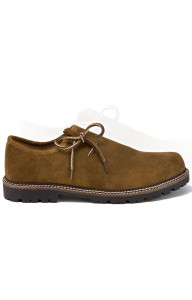 6. What should I wear my lederhosen with?
6. What should I wear my lederhosen with?
There are lots of styles which can say a lot about your personal taste, especially within Bavaria, but the standard way of wearing lederhosen is with a checked shirt, a pair of thick woolly socks, and Haferschuhe, boot-like shoes made of leather (ideally in the same shade as your lederhosen).
We hope this quick Q&A has given you the information you need to make a decision – and will be happy to answer any questions you have on Twitter. Also, feel free to contact our sponsors for information and to buy directly.

